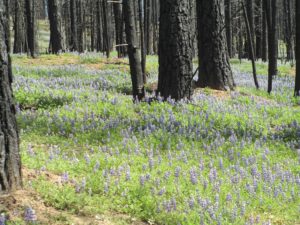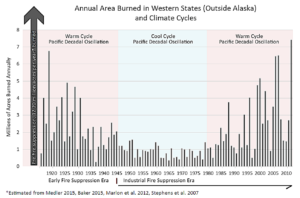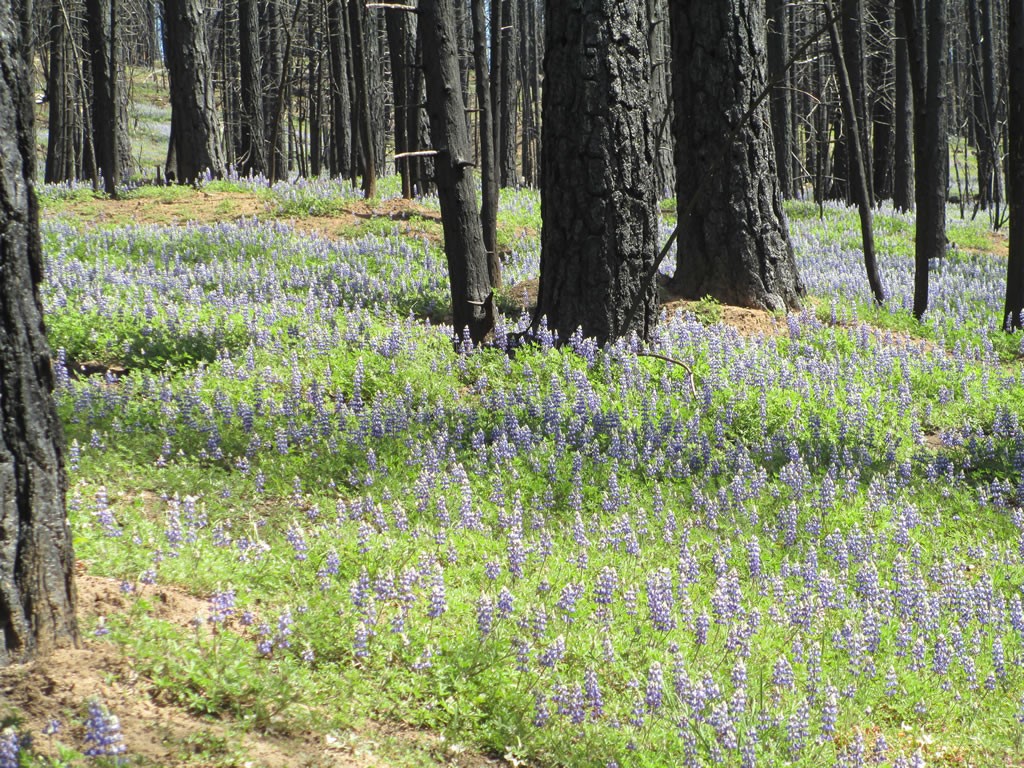A team of fire ecologists released a report this week titled “Everything You Wanted To Know About Wildland Fires” summarizing the state of knowledge about forest fires on public lands. This report comes just days after the US Congress passed the Wildfire Suppression Funding and Forest Management Activities Act as part of the federal omnibus appropriations bill, and calls into question the activities prescribed in the Act and the faulty reasoning behind them. The Act categorizes wildland fires as ‘disasters’, increases annual fire suppression funding, weakens environmental protection laws to increase logging, and allows logging projects on thousands of acres without full environmental impact analysis or meaningful public disclosure, all in the name of reducing the risk or extent of wildfires. Dr. Dominick DellaSala, Director of Forest Legacies and one of the co-authors of the report, said, “The Wildfire Suppression Funding and Forest Management Activities Act ignored the past three decades of science that has found fires, including large high-severity fires, are an ecologically essential part of forest ecosystems and create highly biodiverse wildlife habitat.”


The report emphasized the need to accept a coexistence with forest fire and suggested the most effective pathway is: limit ex-urban sprawl through land-use zoning; lower home ignition factors by working from a home-centered perspective with vegetation management and home retrofitting for defensible space, instead of the wildlands-in perspective of logging to reduce fuels; thin small trees with immediate prescribed burning in plantations while prioritizing wildland fire use in forests away from homes; store more carbon in ecosystems by protecting public forests from logging and incentivizing carbon stewardship on non-federal lands; and shift to a low-carbon economy as quickly as possible. Anything less will not achieve the desired results of climate-resilient forests with high biodiversity providing the equivalent of billions of dollars in ecosystem services.
The report specified the general limitations of ‘fuels reduction’ thinning, and collateral ecosystem damages. Thinning reduces habitat for canopy-dependent species like spotted owls, requires an expansive road network damaging to aquatic ecosystems, can spread invasive and flammable weeds, and releases more carbon emissions than fires. There is also a very low probability (3–8%) that a thinned forest will encounter a wildfire during the narrow 10-20 year period of reduced ‘fuels’, so large-scale thinning proposals that alter forest conditions over large areas and release huge amounts of carbon have a very low chance of ever affecting a wildfire. Thinning is seldom cost effective, requiring public subsidies or the commercial sale of large fire-resistant trees. In some regions (Sierra Nevada, Klamath-Siskiyou), time since fire is not associated with increasing fire risks due to fuel build-up—actually the opposite is true because as these forests mature, they become less flammable. At regional scales, active management (unspecified forms of logging) has been associated with higher levels of high-severity fires, indicating logging tends to heighten fire risk. Most importantly, thinning efficacy is limited under extreme fire weather, the principal factor governing large fires.
Dr. Timothy Ingalsbee, Director of Firefighters United for Safety, Ethics, and Ecology and a co-author of the report said, “Weather-driven wildland fires, the main factor in the largest wildfires, cannot be stopped until the weather changes, yet they incur excessive costs and firefighter risks during ineffective fire suppression. Funding for widespread thinning and suppression would be better spent helping communities prepare for fire via defensible space.”

Dr. Dellasala continued, “Fire is a natural force that has shaped the biodiversity of dry forests across the West for millennia. Fire is only catastrophic when it destroys homes or results in loss of life. Unfortunately, fire has been used as an excuse for opening up millions of acres of public lands to unrestricted logging based on the false premise that logging can prevent future fires or can ‘restore’ forests that have burned. Importantly, managing wildfire for ecosystem benefits is not the same as ‘let it burn.’ Instead, it involves monitoring wildfire behavior initially, targeting suppression at fires likely to spread near towns, ‘loose-herding’ and directing fire in the back-country under safe conditions, cutting fire lines nearest homes, and keeping fire fighters out of harm’s way.”
The report ended on a hopeful tone, listing forest management options that are compatible with western forest resilience and fire-mediated biodiversity in a changing climate. Climate robust conservation means protecting carbon-dense forests nationwide as a foundation for safeguarding biodiversity and ecosystem services, reducing land-use stressors, connecting landscapes for wildlife migrations, and reducing carbon emissions from logging.
Explore further:Researchers find post-fire logging harms spotted owls

